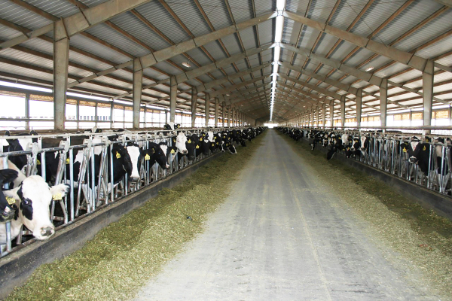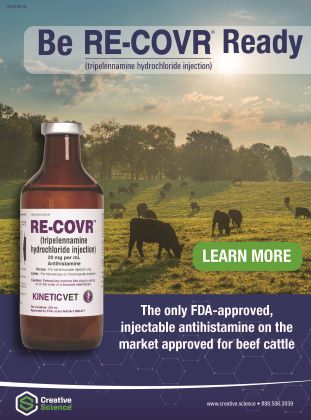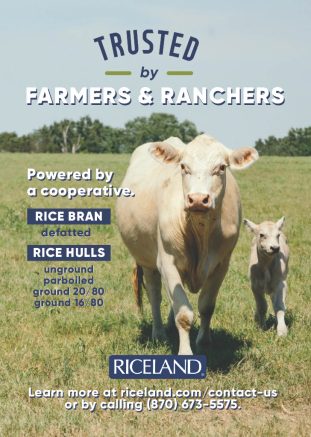Minerals and Supplements for Dairy Cattle

Minerals and Supplements for Dairy Cattle
Nutrition is extremely important for optimum health and productivity in dairy animals. Therefore most dairies have rations formulated by a nutritionist to make sure all important nutrients are present and in correct balance. This includes vitamins, minerals, protein, fat, water and energy. Many dairies use a TMR to deliver these in a form that will be ready for consumption by the cattle.
The TMR mix may change a little with the seasons but mainly changes with the age and stage of the animal, such as where the cow is in her lactation/production cycle. Scott E. Poock, DVM, DABVP, Associate Extension Professor, University of Missouri, says that if cows are receiving a TMR year round, it doesn’t change much with the seasons but changes more if the cow is going from dry to lactating, etc. “A difference that does occur with the seasons, however, is when we go from winter to summer and have heat stress. That’s when we need to change the ration so that it’s a little more energy-dense because the cow is not eating as much, due to the heat,” he says.
She will also be losing fluid and electrolytes, through sweat and more salivation as she pants or slings saliva over her back in an attempt to cool off. “In that situation we want to provide feed that’s more energy-dense (since she is eating less total feed) and increase the bicarb for rumen health. We also increase the sodium, because even though cows don’t sweat a lot, they do sweat, and salivate more—losing sodium.”
Winter challenges are generally not as dramatic as heat of summer. “The cow can eat more in winter (cold weather increases her appetite) and increase the calories to generate heat; her intake won’t drop like it does in summer. In the heat we increase bicarb and potassium—which will raise the DCAD (dietary cation-anion difference) of the diet–and the cows are able to withstand the heat stress a little better,” says Poock.
“Some diets will increase potassium for the lactating cow but we can’t do that in the dry cow or we will mess up their calcium metabolism. For the lactating cow, however, increasing the potassium in the summer will help mitigate heat stress.”
When the diet is delivered as a TMR, all of the things needed by that cow will be added into it, rather than given as a supplement, per se. “For a grazing dairy, however, one thing that will change in the spring—especially with rapidly growing grass—is the need for magnesium. It’s fairly common to increase magnesium levels in the minerals that are being supplied, to prevent grass tetany, and more importantly, milk fever. If you have a grazing herd that’s seasonal and they are calving in the spring, the increase in magnesium will help prevent grass tetany but also milk fever (caused by low calcium levels) because those two minerals are tied in together,” he says.
“The Parathyroid Hormone (PTH) receptor works better when the magnesium levels are in proper order. In that situation you also have to be careful with potassium because it will block magnesium absorption. During the summer if you increase potassium you need to also increase magnesium, to make sure the calcium metabolism is staying balanced,” he says.
Breeding age heifers and bred heifers should be receiving a TMR as well, since they will be moving into that stage of their lives to become cows. “The majority of them should start receiving a TMR shortly after weaning, because this is what they will be living on for the rest of their lives.” They need to adjust to that early on.
Vitamins are also important, as well as the minerals. “Biotin is very important year round, but maybe even more in summer because of heat stress and the increased chance of acidosis and subsequent laminitis. Zinc is also important for hoof health and should be part of the ration anyway,” says Poock.
If the dairy is working with a good nutritionist, everything should be covered. “If you have a nutritionist and veterinarians involvement on a routine basis, this should all be taken care of. A 1000-cow dairy (or larger) should have their nutritionist on the farm at least monthly and preferably more often—and have weekly communication even when the nutritionist is not at the farm. A 200-cow dairy might have monthly visits to the farm. The veterinarian should also have close involvement,” he says.
“I often took seminars in nutrition, not because I wanted to do the nutrition work for clients, but I wanted to understand enough so that I could be helpful; more than likely I would be on the farm more often than the nutritionist. If I know enough, if I see something that should be addressed or changed, I could let the nutritionist know. The goal is for both parties to always be working together to make the farm more profitable.” It can be very helpful to have more boots on the ground and eyes on the farm, to create a good team effort so everything can run smoothly and cow health and milk production can be optimum.
Dr. Mike Hutjens, Professor of Animal Science Emeritus (Department of Animal Sciences at the University of Illinois Urbana) says there will be some changes in mineral needs from summer to winter but the real drive is energy and dry matter intake.
“Cold weather doesn’t really change the mineral needs, whereas summer heat stress will make more difference. The protein dynamics change also, in terms of the supplements we might be looking at due to heat stress. Cold stress is more driven by energy intake,” he explains.
The rumen of a dairy cow generates a lot of heat—much like a furnace in a house. “These animals will eat more feed in cold weather, unlike during hot weather and heat stress—in which they consume less dry matter. If it’s cold they will eat more feed, if given the opportunity. It may be just a matter of monitoring the feed bunks. If weather is cold, and those bunks start to be slicked up and empty earlier in the evening or overnight, you may want to increase the dry matter intake by one or two pounds per cow, and see if that will maintain their needs,” says Hutjens.
“The advantage we have with the lactating cow is that we can readily see the effects of cold weather by milk yield. If suddenly we get a cold snap and milk yield starts dropping, we realize the cows are having to utilize some of those nutrients to maintain body temperature. For a cow, however, the ambient temperature will be very low before this happens.”
It pays to protect cows from adverse weather, and provide shelter so they can be out of the wind. “In some parts of the U.S. where those cows are outside in corrals rather than under a roof, this can be more challenging. If we can prevent wind chill, this will be a plus for those cattle. If a cow is in a cold environment—especially if there’s wind—we also need to worry about frozen teats and frostbite damage,” he says.
“Most dairy cow diets in terms of protein and energy and the rations balance for protein level and types of protein. In cold weather there are not a lot of dynamics that affect the rumen, unlike during heat stress in which we see a drop in pH and a change in blood flow. That doesn’t occur in winter.”
Most dry cows are limit fed, but a person may have to make small tweaks in the diet with changes in weather. “On the limit-fed diet we may be looking at 30% straw in terms of dry matter, and in cold weather may discover that we need to drop that to 20% straw to allow more chance for those dry cows to consume a little more feed.”
Minerals
Minerals are more affected during hot weather than in cold. “Under heat stress the animals lose electrolytes, but in winter that’s not a big problem. If young calves are having some type of digestive disorder and scouring, they obviously are losing fluid and electrolytes, and we may have to intervene to maintain the proper sodium chloride and potassium levels,” he says. If the older animals are on a well-balanced diet, the minerals should be appropriate in the winter.
By Heather Smith Thomas.
Here is another article focusing CRV Bulls
For Leading Industry News in the Cattle Industry




